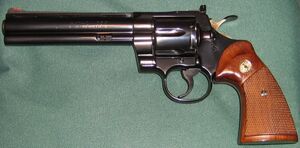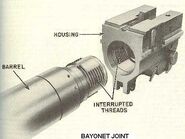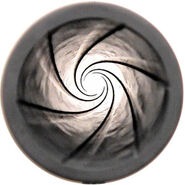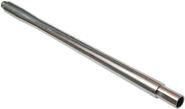No edit summary |
|||
| Line 5: | Line 5: | ||
Depending on type of firearm, the barrel length will vary. Most rifles and shotguns have barrel lengths of around 16 inches, with some having barrels as long as 28 inches, or as short as 7 inches. Most semi-automatic pistols have barrel lengths of 3 to 5 inches, with longer barrels generally being used in competition. Revolver barrel lengths are similar to semi-automatic pistol barrel lengths. Depending on the propellant used, longer barrels will generally produce greater velocities with most ammunition, resulting in greater terminal ballistic performance and greater precision at longer ranges, due to the projectile dropping less over comparable ranges. Too long of a barrel will result in the velocity of the projectile dropping, however, as there is more drag due to the rifling in the bore and less pressure pushing the projectile, given the larger area that the gases from the propellant are allowed to expand. |
Depending on type of firearm, the barrel length will vary. Most rifles and shotguns have barrel lengths of around 16 inches, with some having barrels as long as 28 inches, or as short as 7 inches. Most semi-automatic pistols have barrel lengths of 3 to 5 inches, with longer barrels generally being used in competition. Revolver barrel lengths are similar to semi-automatic pistol barrel lengths. Depending on the propellant used, longer barrels will generally produce greater velocities with most ammunition, resulting in greater terminal ballistic performance and greater precision at longer ranges, due to the projectile dropping less over comparable ranges. Too long of a barrel will result in the velocity of the projectile dropping, however, as there is more drag due to the rifling in the bore and less pressure pushing the projectile, given the larger area that the gases from the propellant are allowed to expand. |
||
| + | ==Free-floating barrel== |
||
| + | A barrel that is free-floated is only attached to the receiver. Nothing else (the stock, handguards, etc.) touches the barrel, with the exception of barrel-mounted sights. This is to prevent other parts from interfering with barrel harmonics, making for a more accurate rifle. |
||
==Gallery== |
==Gallery== |
||
Revision as of 22:04, 22 July 2012

The barrel shown on this gun is protruding to the left.
The barrel is the part of a firearm which extends out of the firing chamber, typically a round tube-like structure.
Length
Depending on type of firearm, the barrel length will vary. Most rifles and shotguns have barrel lengths of around 16 inches, with some having barrels as long as 28 inches, or as short as 7 inches. Most semi-automatic pistols have barrel lengths of 3 to 5 inches, with longer barrels generally being used in competition. Revolver barrel lengths are similar to semi-automatic pistol barrel lengths. Depending on the propellant used, longer barrels will generally produce greater velocities with most ammunition, resulting in greater terminal ballistic performance and greater precision at longer ranges, due to the projectile dropping less over comparable ranges. Too long of a barrel will result in the velocity of the projectile dropping, however, as there is more drag due to the rifling in the bore and less pressure pushing the projectile, given the larger area that the gases from the propellant are allowed to expand.
Free-floating barrel
A barrel that is free-floated is only attached to the receiver. Nothing else (the stock, handguards, etc.) touches the barrel, with the exception of barrel-mounted sights. This is to prevent other parts from interfering with barrel harmonics, making for a more accurate rifle.


